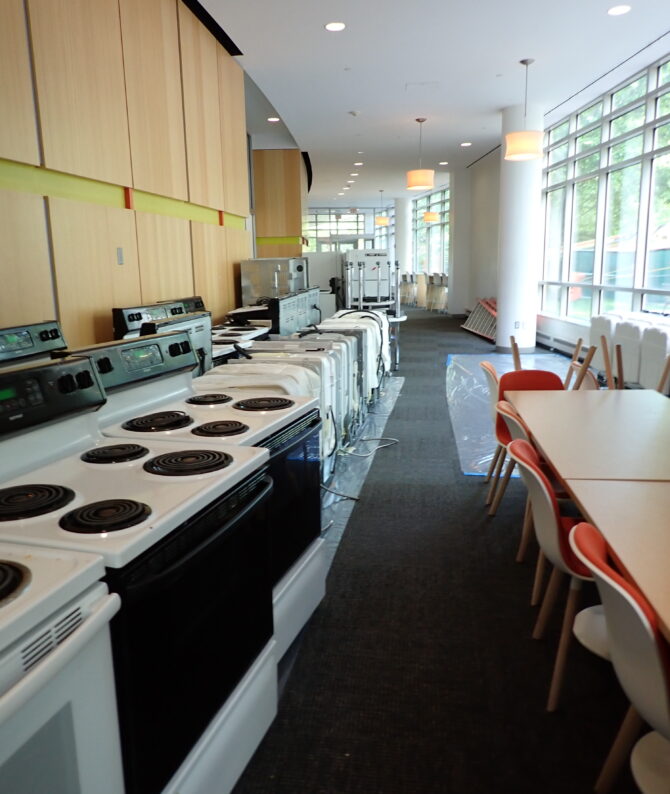Summer Preventative Maintenance Keeps our Campus on Track All Year

By Julia Laquerre with the Climate Justice and Sustainability Hub
While students and faculty enjoy the warmth of summer break, maintenance teams are dispatched across the campus to prepare for the upcoming school year. They take advantage of the rare occurrence of an empty campus.
To ensure a successful semester for students and faculty, Northeastern’s Planning, Real Estate, and Facilities (PREF) division is on a mission to ensure the campus infrastructure operates seamlessly. Every summer PREF staff conducts a wide range of preventative maintenance tasks, from replacing light bulbs to optimizing airflow heating and cooling systems in dormitories, PREF works diligently to improve the campus experience and create an optimal environment for students and faculty.
Scott Peterson, the Director of Building Services, said that the summer provides a unique opportunity to work with Residential Life to close dorms and tackle large products like “upgrading floors, LED lighting, enhancing common areas and installing new appliances to provide a greater living environment for students. The classrooms are also furnished with upgraded technology and furniture to prepare for the fall semester.”
A significant portion of summer preventative maintenance occurs in areas that are regularly used throughout the year. Behind the scenes, in the operational heart of the building, there is an ongoing regimen of preventative maintenance whether it’s in the mechanical rooms, plumbing, servicing pipes or heating systems.
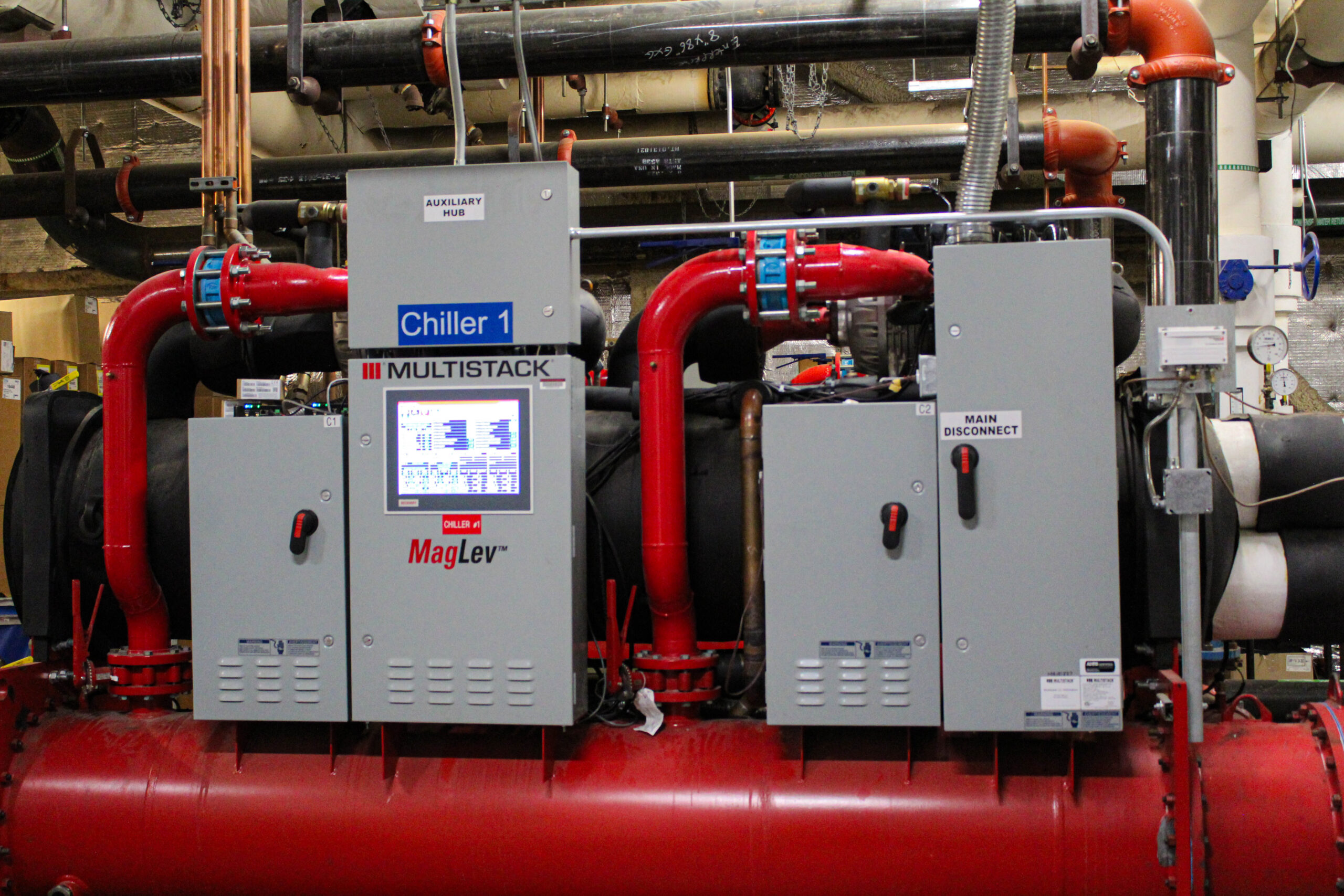
Water Chiller |
Each specialized crew performs a thorough sweep of every building based on their specific trade. Meaghan Healey, Senior Director of Trades and Operations, emphasized, “they’ll work long days to be able to get into these buildings. Our end goal is making sure that students aren’t going to walk in [their dorm] and need to put in a work order right off the bat.”
| While the Building Services and Trade & Operations teams focus on the nuanced aspect of campus maintenance, their efforts complement Northeastern’s broader sustainability initiatives. Servicing outdated facilities aligns with Northeastern’s commitment to Boston’s BERDO plan, to reduce greenhouse gas emissions to net zero by 2050.
Addressing these issues, along with initiating simple measures such as replacing old incandescent light bulbs with energy efficient LED bulbs saves the university thousands of dollars in utility bills and reduces the use of carbon by about 500 MTCe, the equivalent of switching 18,500 incandescent light bulbs to LEDs or the equivalent of taking 109 gas-powered vehicles of the roads for one year.
They are also in the process of installing smart dimmer light switches that automatically turn off when there is no movement in a room after 20 to 30 minutes. |
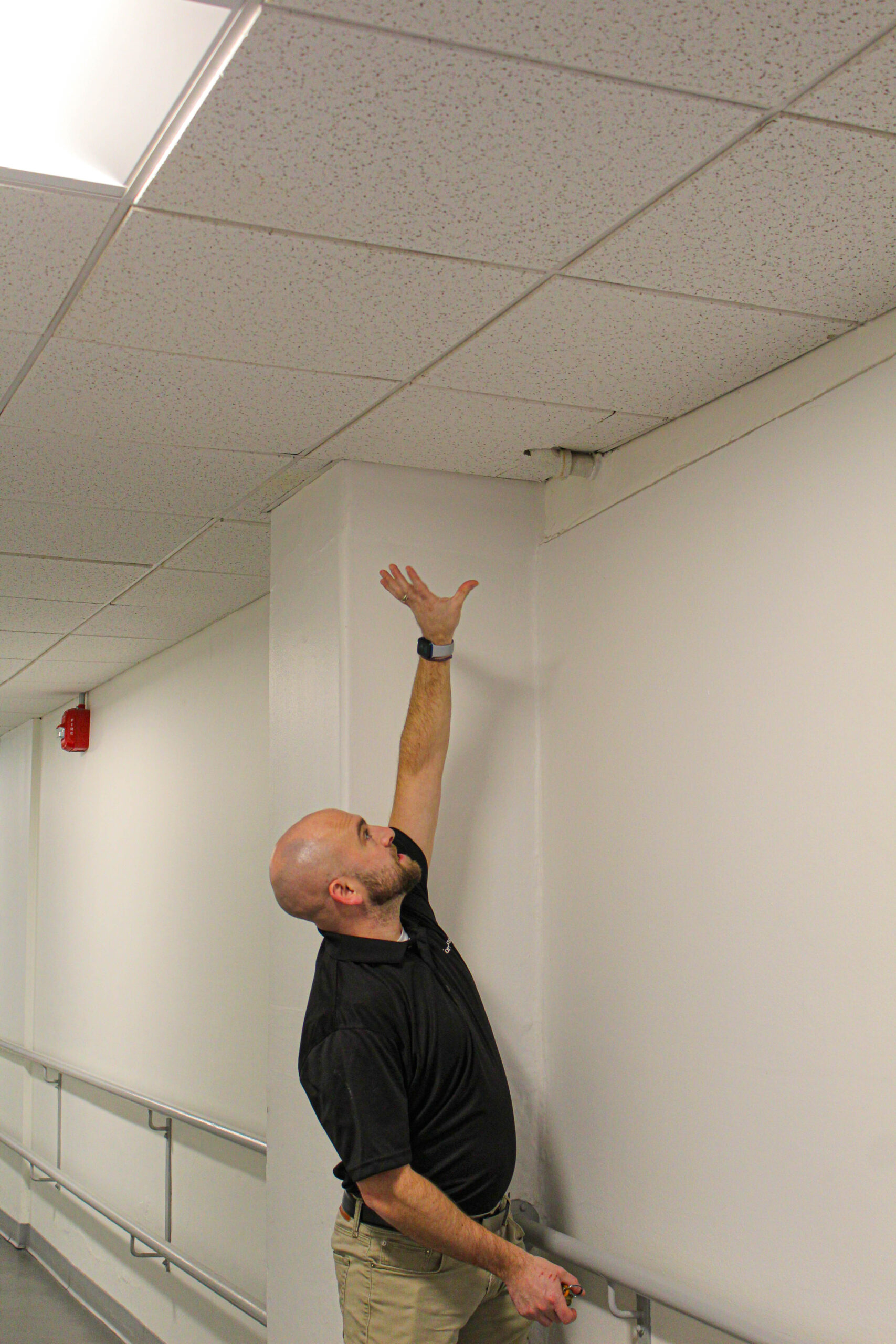
Mark Bates, the Energy Manager of Planning, Real Estate, and Facilities |
These projects and many more have assisted Northeastern in reducing total emissions to levels below the 0.01MTCe (Metric Tons of Carbon Equivalent) of greenhouse gas per year required of universities in 2025, according to BERDO. The Boston campus achieved a 10% reduction in natural gas since 2018, said Jacob Glickel the Director of Sustainability Operations.
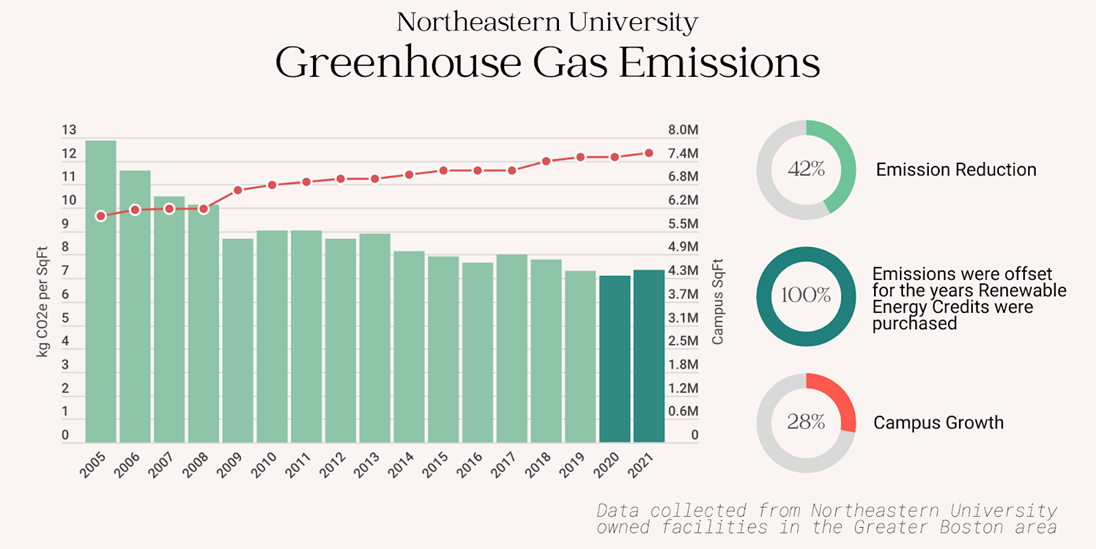 |
One of the more significant projects completed this summer was the blower door test conducted in the West Village G dormitory. The test is a diagnostic tool that assesses the amount of air that escapes and enters a building. When the building isn’t sealed effectively, temperature-controlled air can escape, requiring more energy to regulate indoor conditions.
Enhancing the building’s air tightness “reduces the amount of natural gas we have to burn… and increasing energy efficiency is a key component of reducing the demand for burning fossil fuels,” said Glickel. The projects also extend the life of the buildings and make them more resilient to the wear and tear that comes from extensive use.
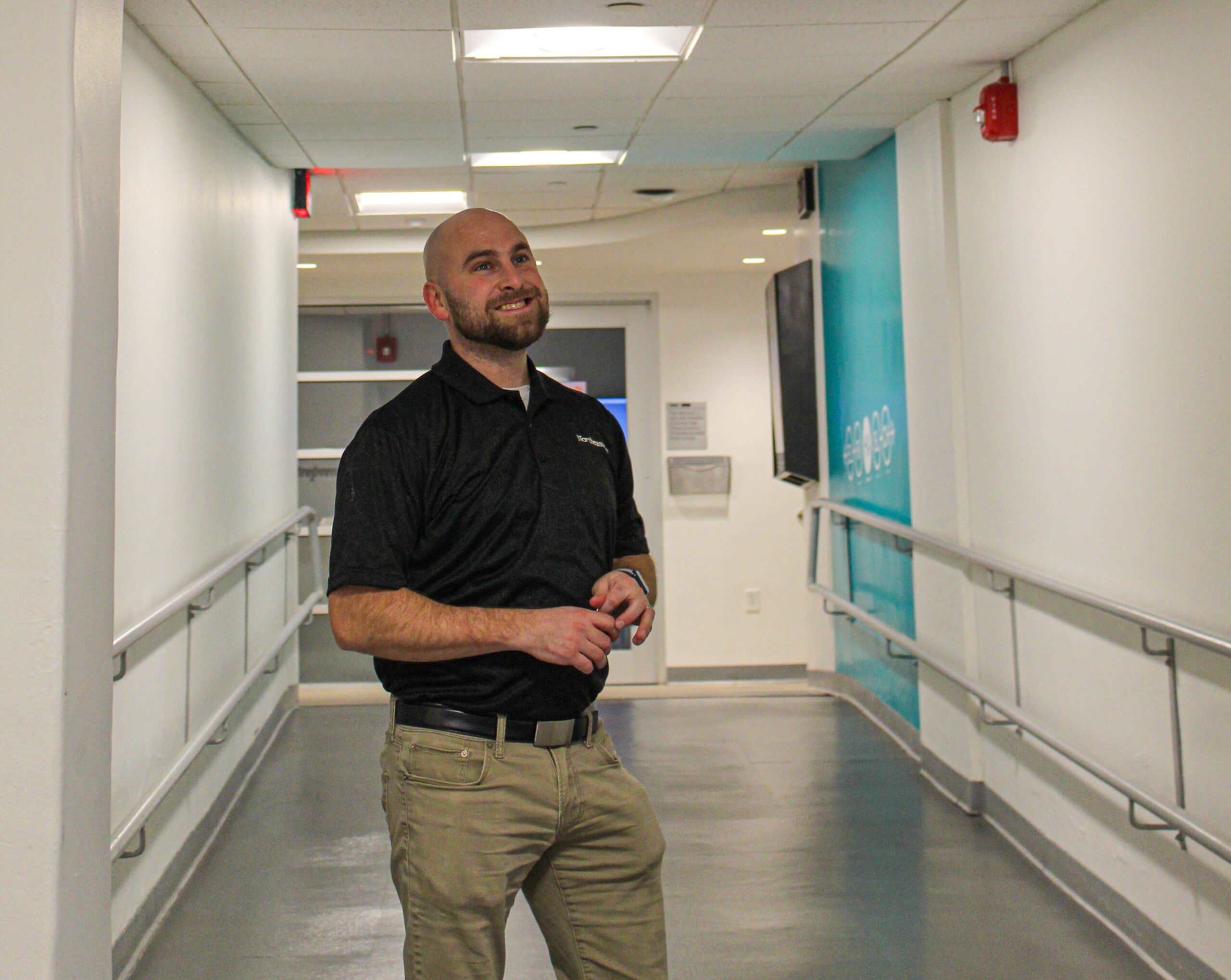
Mark Bates, the Energy Manager of Planning, Real Estate, and Facilities |

Valve with Actuator- monitors to determine when to open or close the valve. |
Looking ahead, Mark Bates, the Energy Manager of Planning, Real Estate, and Facilities, emphasized that the future of preventative maintenance involves implementing systems that monitor the efficiency of a building. The goal is to detect an issue within 15 minutes of when it arises allowing maintenance to respond in real time rather than reacting after something becomes a larger complication. It’s all about staying one step ahead.
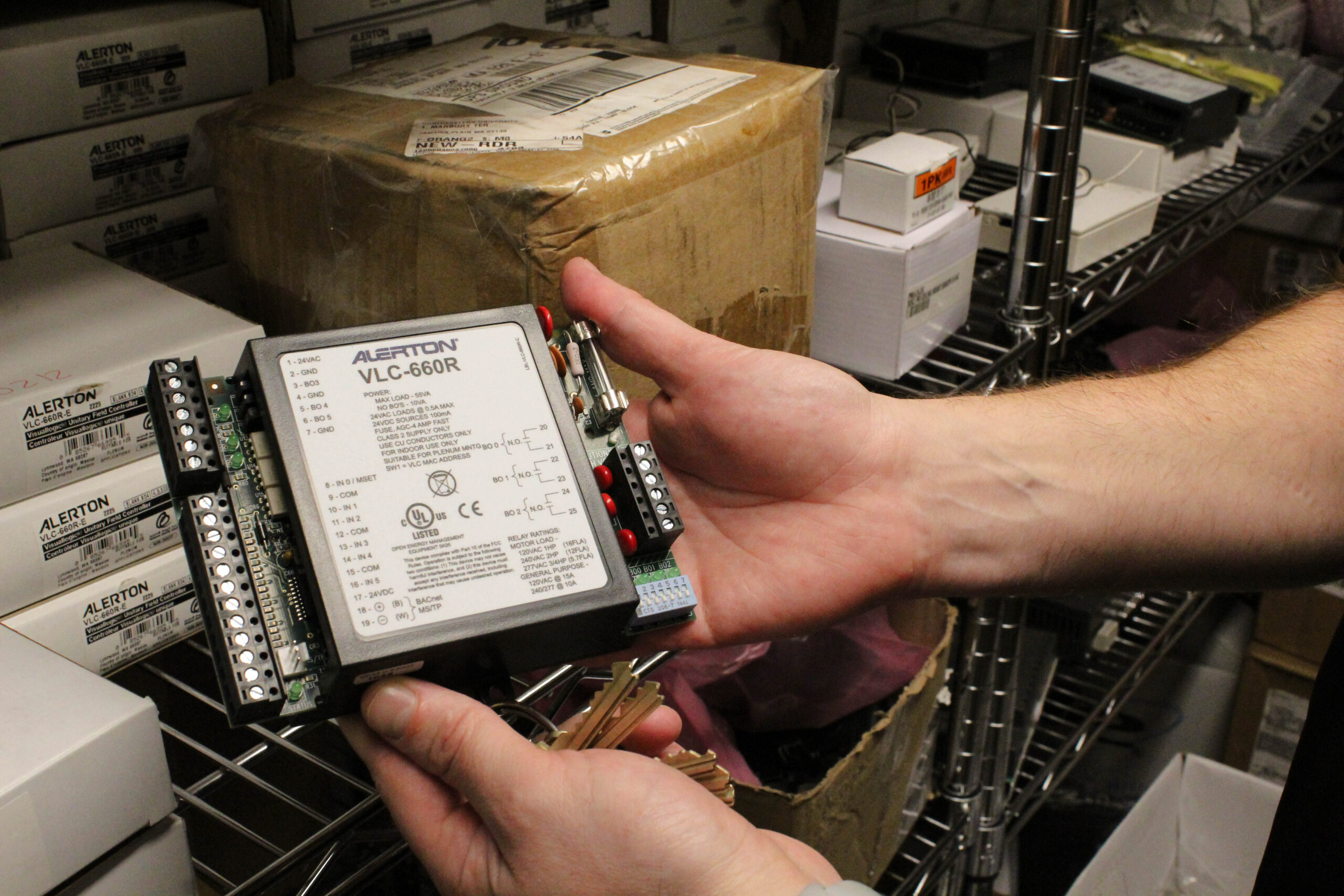
Field Controller |
Even with technological advancements, making Northeastern’s campus more sustainable is a collaborative effort between students, faculty, and staff. “There are lots of opportunities to decarbonize no matter how small a project, and it just takes some organization for us to provide those opportunities. We can’t just depend on a project manager or a design team to kind of see it all, but we need to help provide ideas and provide tools to get that done. Work together,” said Bates.
The joint effort of Building Services, Trades Operations, Energy Management, and many other PREF departments during the summer break translates into an optimized environment for students and faculty.
Together, they’re creating a sustainable and efficient ecosystem where every detail counts and every success reflects the university’s dedication to fostering a supportive and thriving educational community while also advancing our sustainability goals.
Written by Julia Laquerre- 12-01-23


